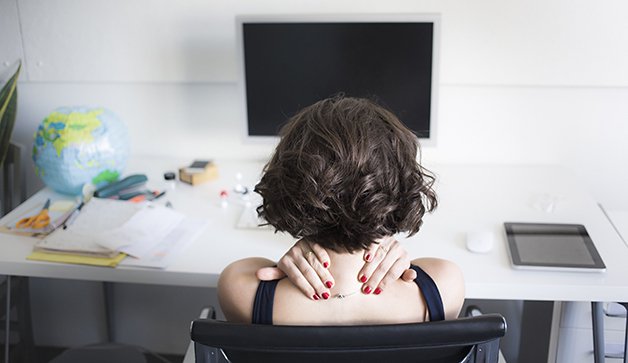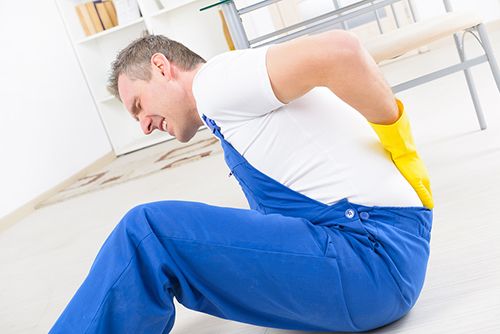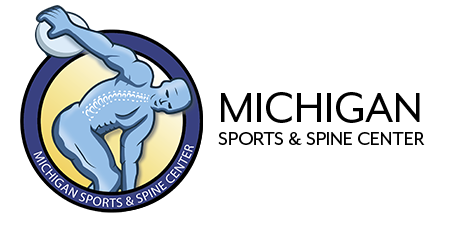Live More Comfortably with Non-Surgical Treatment Solutions


Four out of five people experience back pain at some point in their life. Suffering from back pain is the fifth most common reason for visiting the doctor.
No one likes to feel like they cannot do ‘normal’ activities, such as picking up your children, throwing a ball to the dog in the yard, jumping rope, walking up a flight of stairs; things we take for granted until we cannot do them any longer.
Back pain can be the result of trauma, such as a fall or a car accident. But most commonly, back pain is the result of an everyday activity done incorrectly – activities such as sitting at a computer in the same position for hours. This is the same for spending hours glued to your cell phone, or bending over vacuuming, carrying shopping bags or twisting to reach or lift an object.
Unfortunately the amazing flexibility and strength that’s engineered into your back also makes it susceptible to acquiring a lot of problems. There are a lot of nerves running throughout your spine and throughout the rest of your body. A problem in your back can lead to leg pain, hip problems, and so many other issues. The good news is that lower back pain usually gets better within a couple days or weeks and surgery is rarely necessary. Even better, there are several different, simple forms of treatment that do not entail surgery.
Before starting any type of treatment, it is essential you see a trained spine specialist, like Michigan Sports & Spine Center, to create an appropriate treatment plan for your specific condition or injury, and with your medical history.
NON-SURGICAL PAIN RELIEF TREATMENT SOLUTIONS
- Ice or heat – applying an ice pack or heat pad can provide relief. Some patients find it useful to alternate between the two.
- Manipulations/osteopathic manual medicine – manipulations are performed by a chiropractor and help to relieve lower back pain by reducing pressure on sensitive structures, increasing flexibility, improving blood flow and reducing muscle tension.
- Exercise training/physical therapy – a treatment program consisting of both back exercises and physical therapy, and will usually include a combination of stretching, strengthening and low-impact aerobic exercises.
- INJECTIONS:
- Epidural injections – an injection into the spine, delivering steroids that can provide lower back pain relief by decreasing inflammation in the painful area.
- Facet (joints of the spine) injections – entails injecting a small amount of local anesthetic and/or steroid medication, which anesthetizes the facet joints and blocks pain.
- Trigger point injections – procedure used to treat painful areas of the muscle that contain trigger points, or knots of muscle that develop when muscles do not relax. Involves the injection of medication directly into the trigger point.
- Lumbar decompression therapy – a technique that helps to relieve the symptoms of pain, tingling and weakness that people feel in their lower backs, legs, feet and butt.
- Acupuncture – involves the insertion of extremely thin needles through skin at strategic points on the body.
- Laser – utilizes specific wavelengths of light to interact with tissue and aids in accelerating the healing process.
- Traditional massage therapy – improves blood flow and reduces muscle stiffness.
- PRP – relieves pain by naturally promoting long lasting healing of musculoskeletal conditions.
- Stem cell therapy – most commonly from bone marrow and used to help treat regenerative growth to the disc, the joints and the ligaments of the spine.
- Back braces – provides support and stability for short-term use.
- Pain medication – used to treat severe pain issues for short-term use and as an adjunct to the other forms of treatment

BACK PAIN PREVENTION TIPS
Luckily, there are several different actions we can take to alleviate back pain or prevent it from getting worse. It’s very important to reduce strain, relieve pressure, protect your spine and strengthen your muscles. Altering daily habits can help you maintain a healthy, pain-free back – often requiring just a few daily adjustments that will soon become second nature.
*Straighten up
- Be conscious of the way you’re sitting or standing and improve your posture.
- Good posture protects the intricate pieces of your spine and keeps them healthy and functioning properly. Bad posture strains and stresses your back and can even change the architecture of your spine.
- Avoid at all costs – slouching, rounding your shoulders and bending sideways when standing. This means no slumping over at your desk when your working that grueling 9am – 5pm.
*Stretch
- One of the most important things you can do for back pain prevention is to get up and get moving!
- Laying down, standing or sitting in the same position for a long period of time isn’t healthy on your back. It’s very important to relieve the strain of the day whenever you can by walking around and doing some simple stretches.
- This helps to improve circulation in your back and can ease strains or aches that occur due to over activity.
*Exercise your core
- Strong core muscles are significant in providing support to the lower back and helping to avoid injury.
- Low-impact cardio exercises, such as walking, increases blood flow to the spine and this supplies healing nutrients and hydration to the structures in your lower back.
*Eat right
- Maintaining good eating habits will help to maintain a healthy weight and also not put unnecessary stress on your body.
- Keep your digestive tract on track by sustaining a healthy diet of fresh fruits and vegetables, dairy products, lean meats and whole grains.
- If your intestines are functioning properly, it will maintain your spine because your inside and your outside are relating to one another.
*Watch your weight
- Carrying extra pounds, especially around your midsection, can make back pain worse by shifting your center of gravity and putting strain on your lower back.
- Staying within 10 pounds of your ideal weight can help control back pain.
*Increase your vitamin D and calcium intake
- Osteoporosis is one of the most common causes of back pain later in life, particularly for women.
- Strong bones can help prevent osteoporosis.
- Milk, yogurt and leafy greens are a good source for calcium.
- Egg yolks, cheese, fatty fish and beef liver contain a decent amount of vitamin D.
*Be careful how you lift
- Try to avoid bending over from the waist to lift heavy objects. Bend your knees and squat, making sure to pull in your stomach muscles and holding the object closer to your body as you stand up.
- Try to avoid twisting your body while lifting.
- If at all possible, push rather than pull heavy objects. Pushing is easier on the back.
*If you smoke, STOP!
- It’s no secret that smoking raises your risks for cancer and heart disease, but most people don’t realize that smoking also can be a cause of persistent back pain.
- Research shows smoking can make existing back pain worse. Coughing increases pressure to the spine.
- Tobacco interferes with blood flow to the spine.
*Sleep sideways
- A good position for sleeping is on your side with pillows between your legs.
- If you must sleep on your back, put a pillow under your lower abdomen to take the stress off your back and support your knees.
- Getting enough restful sleep is essential in maintaining a good, healthy lifestyle.
*Avoid high heels
- This may be a struggle for some, but if you’re going to wear high heels, stick to one-inch heels.
- Heels can shift your center of gravity and put strain on your lower back.
- If you have to wear higher heels than an inch, bring along a pair of low-heeled shoes or flats and slip your feet into them if you begin to feel uncomfortable.
*Choose the right briefcase or handbag
- Make sure to use a bag, purse or briefcase with a wide, adjustable strap that’s long enough to reach over your head.
- Having the strap on the opposite shoulder of the bag distributes the weight more evenly and helps keep your shoulders even and your back pain-free.
- Remember to lighten your load. Periodically go through your bag or briefcase and clean it out, purging anything you don’t need. Any extra weight adds stress on your back.
Sources: WebMD, Spine Health, Healthline, Everyday Health
ABOUT MICHIGAN SPORTS & SPINE CENTER:
We’re innovative leaders utilizing cutting-edge technologies such as musculoskeletal ultrasounds, PRP, stem cell treatment, and other innovative procedures. Michigan Sports & Spine Center is committed to resolving your pain, not simply masking it. We treat the whole body, not just the injury, and perform preventative treatment so your injury doesn’t come back. Our studies prove that Michigan Sports & Spine Center has patient success rates much higher than the national average. We treat everyone from high-profile athletes to your neighbor next door. Our primary focus is getting our patients back into the game of life!
